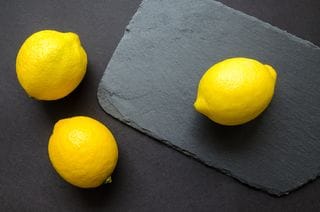Creating Healthy Habits in Quarantine
Part 2: Creating Healthy Habits in Quarantine
In my last blog post, I mentioned “taking care of yourself.” This looks different to different people and has become somewhat of a buzzword in pop psychology. I also know that meditation is everywhere right now. Celebrities are endorsing it, claims are being made about how it changes the brain, and it seems like sitting quietly for a period of time during your day may be the answer to all of your troubles.
And I agree, meditation is helpful; there is science to prove that. However, what I have learned from working with medically-hospitalized patients is that the relaxation and meditation strategies that are useful in one’s day-to-day life may not have the same effect when you’ve been stuck within the same four walls, dealing with incredibly stressful and painful medical procedures day in and day out.
Although being housebound due to a pandemic is not the same as being hospitalized for a prolonged period of time, there are some similarities. In my work with hospitalized patients, specifically, those awaiting transplant, I have found that patients experienced specific categories of distress while hospitalized (Khoddam & Wellisch, 2020). These included boredom, frustration or lack of control, long-term issues merging with the current situation, and guilt over role abandonment (i.e., not being able to be the family member, worker, friend, etc. that they would like to be). Each of these categories may, in fact, also be experienced by all of us as we learn to adapt to this hopefully temporary, necessary, yet anxiety-producing way of life to decrease the spread of COVID-19.
For this post, I am going to focus on dealing with frustration and lack of control. Many interventions exist for anxiety reduction or managing loss of control in the psychology world. Some of these are diaphragmatic breathing (a fancy word for deep breathing), guided imagery meditation, progressive muscle relaxation, and mindful meditation. Any of these can be useful, and really the most important part is finding something that works for you.
Today, I want to talk about the difference between guided imagery meditation and mindful meditation. Mindful meditation, in and of itself, is not necessarily a relaxation technique. The goal of meditation is to be aware. To be aware of what’s happening in the here and now. And what is happening in your body, or your mind, or the world may not be happy, or pleasant, or relaxing.
So, if you have tried meditating in the past and have noticed that you were restless, uncomfortable, anxious, or distressed, that’s OK! That’s just what you were feeling at that moment.
Meditation is an important skill. Once you can understand what you are feeling or what is coming up for you in any given moment, you can have more freedom over the way you respond or interact with your current set of circumstances. However, when someone is going through something distressing (like a hospitalization or a worldwide pandemic), sitting with whatever is happening now may not be what you are looking for.
This is where I find guided imagery to be helpful. And guided imagery is best introduced with an exercise.
I want you to envision yourself holding a lemon… Imagine the weight of the lemon in your hand, the feel of the rind with your fingers… Imagine cutting a slice of the lemon… feeling the juice on your hand… the smell of the fresh zest in the air. And imagine bringing this slice to your lips… biting into the lemon… feeling the warm, sticky, and sour juice in your mouth… and smelling the fresh zest as you swallow.
Now, what did you notice? Did anyone find themselves salivating? This happens to many people when doing this exercise in person (harder to do in print!). The craziest part is, there is no lemon here. Your body is creating a physiological reaction based on an image in your mind.
This is what guided imagery does. It takes something that we all do (creating images in our minds or using our imagination) to help calm or relax our bodies. We also do this all the time in a negative way. Have you ever caught yourself worrying about the future or ruminating about a situation from the past and noticed that your palms start to sweat, or your heart starts to race? The situation is not happening right now, but your body is reacting to it as if it is.
This is the power of your imagination, and guided imagery uses this power to relax, to calm down, and to feel safe. By creating an image in your mind of a place that you feel peaceful, you can decrease the stress or anxiety you feel in this moment. Or by doing a forest guided imagery meditation, you can transport yourself into a cool, calming, and natural environment that you may not be able to do in real life.
I will link some of my favorite guided imagery links on YouTube here, but the best thing to do is try a bunch out and find what works for you!
This post was authored by Hannah Khoddam, a Ph.D. candidate at the University of Southern California.

